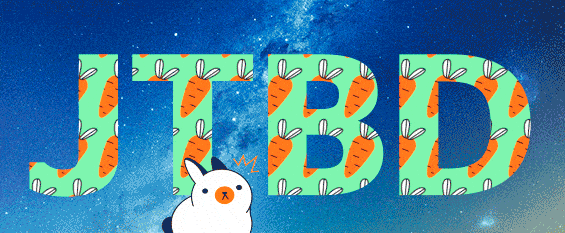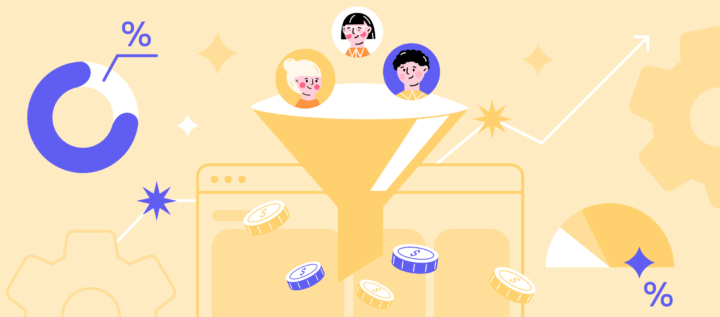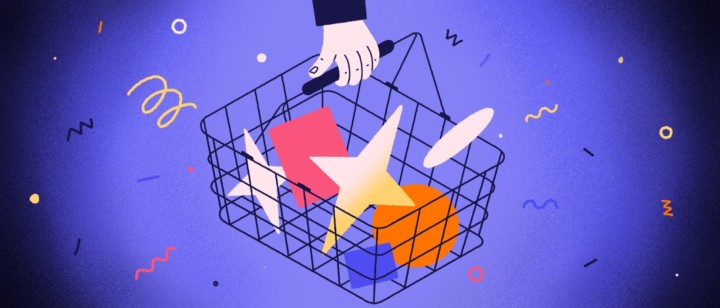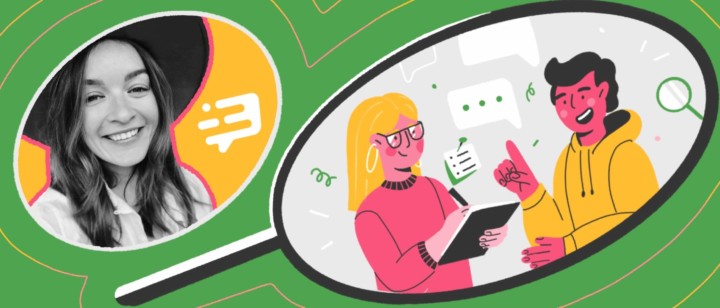How to Implement the Jobs to Be Done Theory to Portray Buyer Personas
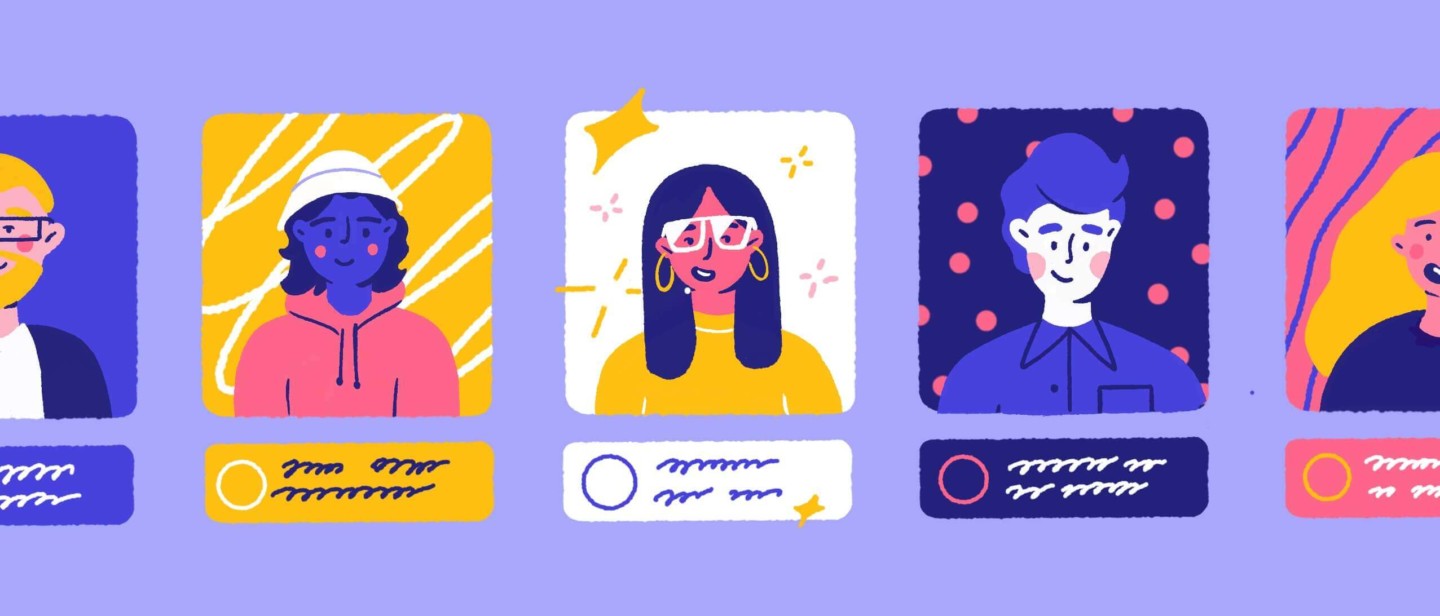
We’re doing continuous research on our customers, and we talk to them endlessly. Over time, we ended up with lots of information on our existing customers, and it prevented us from growth:
- What we knew about our customers was disordered information;
- Due to this, various teams — product managers, marketers, sales reps, and growth managers — couldn’t align on our priorities;
- We have different user segments to make things more complicated because of our product features.
We put together everything we know about our customers so that all teams can use this information. The buyer persona method was a perfect choice for that. We’ve adjusted the classic framework and combined it with the Jobs to be Done theory to ensure that personas are eligible for each team’s goals.
Why did we decide to explore buyer personas? We found another framework we wanted to use. We love frameworks and love using them.
Jokes aside, we were asking ourselves these questions: “Who do we target our platform at? Who is our blog for? Who are our customers?” And when we found we had no answers to them, it pushed us to begin research.
On the one hand, we have the good old buyer persona method; on the other, we had the young, cool, and trendy JTBD theory. So, we decided to merge these frameworks and create a buyer persona with their jobs.
Buyer personas helped us sort out the information we had on our customers and facilitated planning for our product. For example, buyer personas are more useful for feature development and onboarding new employees than a messy set of all user “jobs” and contexts unrelated to segments.
In this article, we’ll share the experience of our research fellows:
- Dimitrii, CEO & founder;
- Dima, Head of Product;
- Olga, Product Marketing Manager;
- Elena, Growth Team Lead.
Allocate responsibilities in a cross-functional team
Dashly team leads and managers from different teams participated in our buyer persona research. This helped us consider the interests of each team and get valuable outcomes for the whole company.
The research design included several processes, with someone from the team responsible for each one:
- Dimitrii and Dima were responsible for the whole research, framework selection, and the outcome that implied vital buyer personas.
- Product, product marketing, marketing, sales, and growth team leads conducted interviews and filled out respondent cards.
- Everyone making this research gathered to brainstorm in a strategic session on one weekend; there were 12 guys.
- The product marketing team took on the final design of buyer persona cards (2 guys).
- Dashly growth team was responsible for the Value Proposition statement (3 guys).
Divide the process into stages
We’ve divided our research into four major stages:
- the preparation stage included the design of the buyer persona card template and drawing up the questionnaire;
- data collection via in-depth interviews regarding Jobs to be Done;
- identifying similar characteristics and patterns among respondents;
- identifying interrelations and finalizing buyer persona cards.
Read on to learn more details about each stage.
Adjust the framework to your goals
We added these things to the classic framework:
– description of the user context,
– circumstances that trigger purchases,
– a set of “jobs” required from a user.
These parameters come first, and descriptive characteristics come second.
We often find the Jobs to be Done theory handy when working on a product. It helps us identify our customers’ current needs: their desires and circumstances where they arise, as well as barriers that get in their way. So, in our buyer persona research, we relied on the Job Stories of our customers, transaction triggers, and possible barriers. This helped us understand what our product should be and how to improve it.
Conversely, the buyer persona approach allowed us to relate “jobs” to user segments.
Step one: designing the buyer persona card template, drawing up the questionnaire
Before research, we created the card template to make interview notes using Miro. Thanks to this template, each research team member knew what we were looking for.
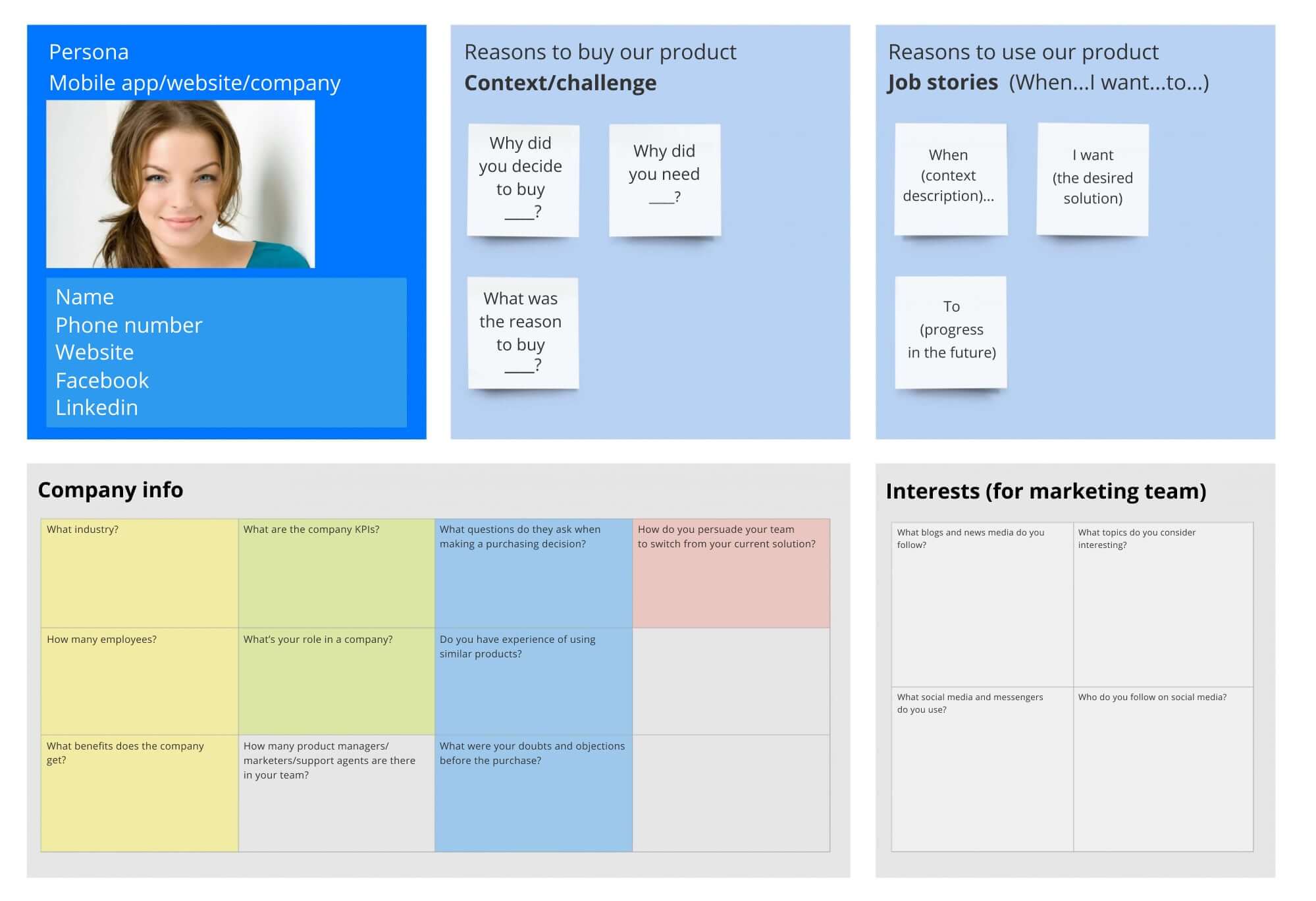
We distinguished separate sections in the card template for “jobs” and challenges. We also added the traditional components of the buyer persona: the company info, role, tasks, KPIs, interests of decision-makers, and communication channels.
Thanks! Your template is already in your inbox

Overall, we had 5 sections:
- respondent details — name, company, contact details;
- reasons to buy our product — context, challenges, transaction triggers;
- reasons to use our product — this is what we described as Job Stories (When … I want … to…);
- company details (industry, website traffic volume, employee count, company KPIs, etc.);
- interests and communication channels.
We came up with a list of questions for each section. If you plan on doing similar research, use our ready-made template with the questions.
Stage two: conducting and decoding the interviews
We already had our segment suggestions and roughly expected 5 buyer personas. Then we supposed we had to run nearly 40 in-depth interviews, 30 minutes each.
To begin profiling buyer personas, you need to run 5-10 in-depth interviews for each profile. Thus, you’ll be able to identify similar patterns and describe the persona profile in detail.
This is much work, and you’d need much time from your team. We decided to use the content from our past projects. Our sales and marketing teams do a lot of interviews, so we already had a lot of records and notes. We already applied the Jobs to Be Done approach during user research.
The number of interviews is important. But what’s more important is their quality. Even 80 respondents won’t help you profile the buyer personas if you don’t have answers to the most important questions.
The problem with our solution was that we had different scripts for all interviews, and in some of them, we didn’t have answers to important questions. Therefore, we moved one stage back and interviewed nearly 20 more people.
Stage three: Data analysis. From particulars to generals and back
We had 39 cards with answers from our respondents. Then, we had to interpret them and see how to group them.
This had to be done by the whole team at once, so we went out of town for the weekend and held a strategic session.
Read also: An Ultimate Guide On How To Develop a Product Strategy
First, we looked for similarities in the challenges and contexts of our respondents. We created a large board in Miro where we moved all user challenges and contexts as quote cards.
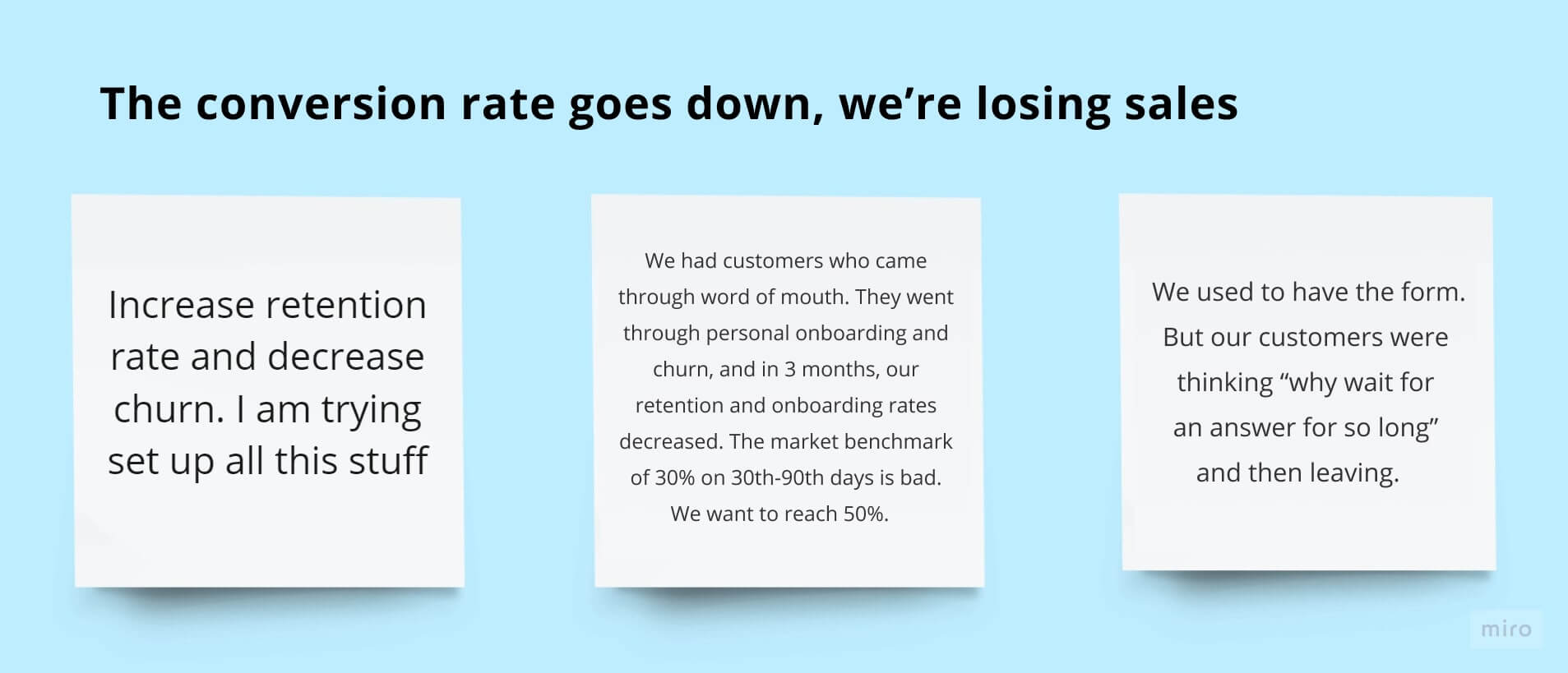
Then, we began grouping similar quotes, and we got several clusters. That’s how we identified major challenges and contexts when users chose us.
A newcomer in a team was one of the most frequent triggers. We heard several respondents say they subscribed to us because they had a newcomer who said, “Guys, we have a problem, we need Dashly”.
We did the same job with all the other information on the respondent cards. We identified similar “jobs”, KPIs, and challenges of companies where our customers worked.
If you generalize, you lose important meanings. When highlighting transaction triggers, it dawned on us that the line “The CR goes down” had different implications. Some actually had their CR decrease, and some always had low conversion rates.
We needed to make sure we were generalizing correctly, so we replayed some interviews.
Some pieces of advice:
- Take the interview notes carefully to avoid speculation and interpret customer answers equally correctly.
- If you replay the recording, put down the time codes to quickly jump to the necessary fragment. We use the beta version of tldv for that.
Stage four: searching for intersections and profiling buyer personas
We categorized respondents and identified similarities. At that moment, we had a complete understanding of what motivated users to buy from us and what “jobs” were the most popular on the platform:
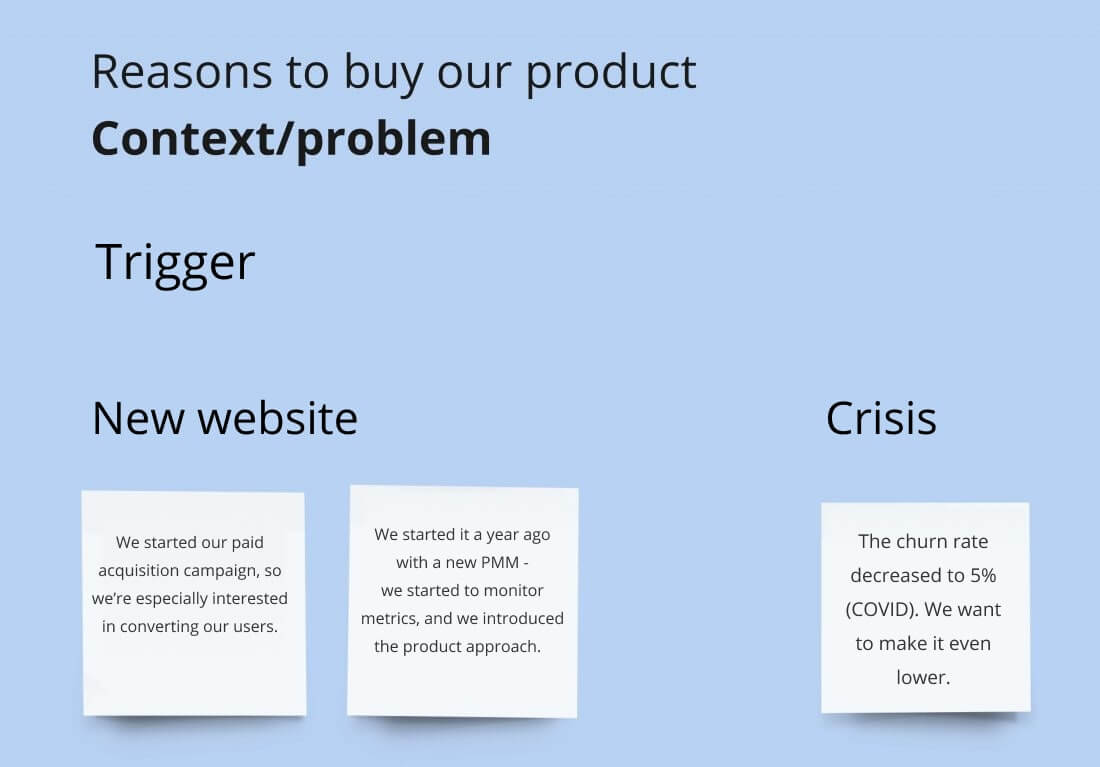
Then, we had to find a way to decompose these markers by finding similarities and merging them in buyer personas. We decided to list the most popular answers to find respondents that thought alike.
We marked respondents’ replies in a spreadsheet. We would mark this parameter in our table if they mentioned new team members. As a result, we got a huge table with many parameters and marks for each respondent.

Once we filled the sheet, we saw interrelations among customers. Some had the same transaction triggers, company roles, business segments, and job stories.
Thus, we divided respondents into five groups, which was our basis for finalizing the buyer personas.
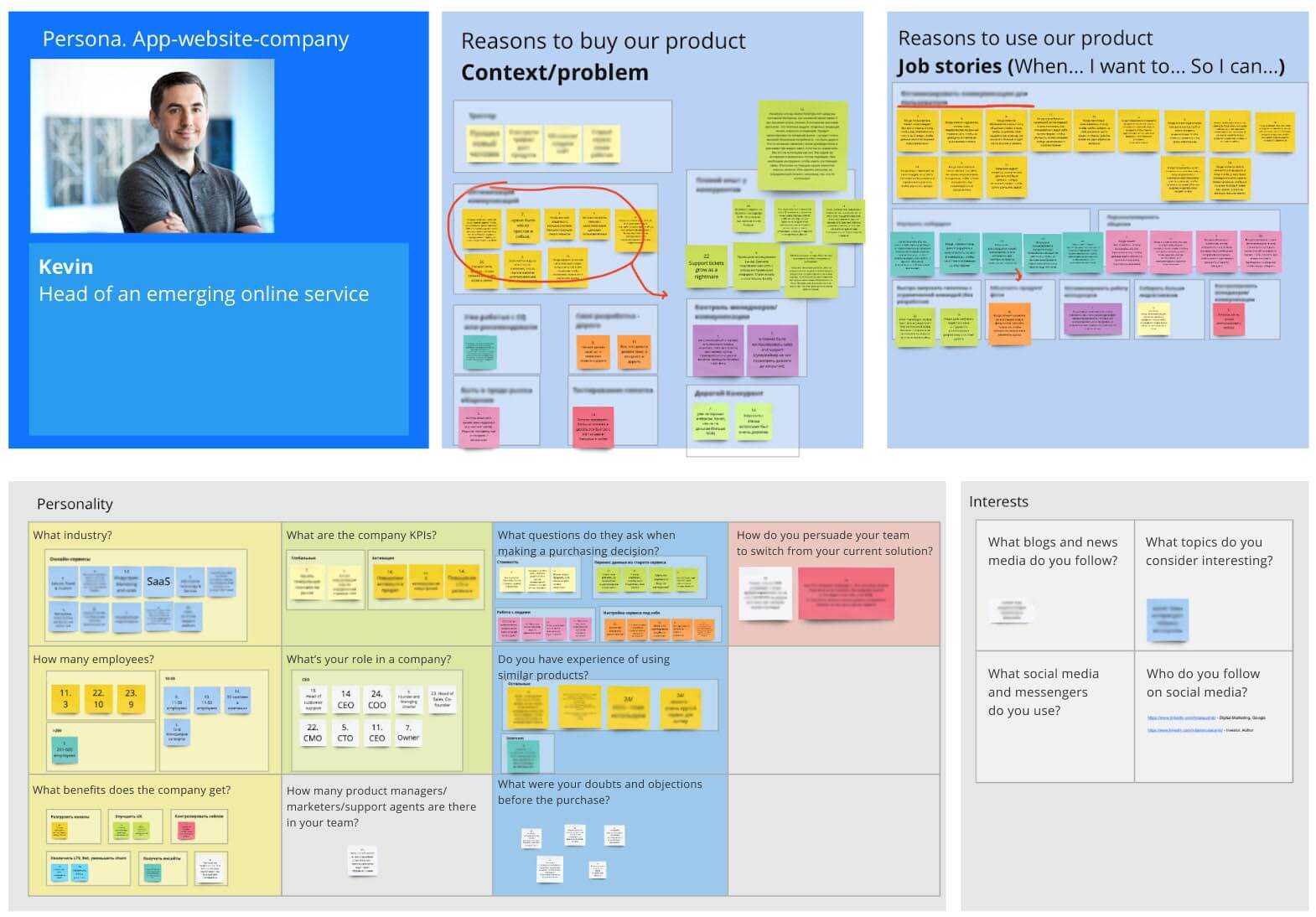
Then, we had to throw the data into good form. We wanted to make it so convenient that any Dashly employee could use them in the future.
UXPressia came in handy: we created persona cards there and saved generalized details here, namely, triggers and contexts, Job Stories, company descriptions, and persona roles.

How to use the outcomes?
Buyer personas help us develop our product and build better communication with our users:
- create personalized funnels for each user segment — qualify customers using a chatbot or other tools and offer them relevant content;
- optimize your sales team routine — make sure your sales reps only call target leads and close more deals;
- design the CJM of your customers — if you know how different customers proceed in your product, you can improve it for them and thus enhance the user experience for particular buyer personas.
When working on our research, it dawned on us how dynamic buyer personas are. One customer can match different profiles depending on their onboarding stage or business development phase.
Let’s say a new company starts using Dashly. Their customers have a lot of support requests that are hard to process via email. They implement the software to set up customer support through an omnichannel website chat. If that’s the case, their context and goals match the ones of the buyer persona Kevin — All in one.
With time, the customer’s website traffic increases, and they get to know the platform better and decide to collect more qualified leads using Leadbot and personalized pop-ups. Then, they match Whitney’s buyer persona — “Where are my leads?”
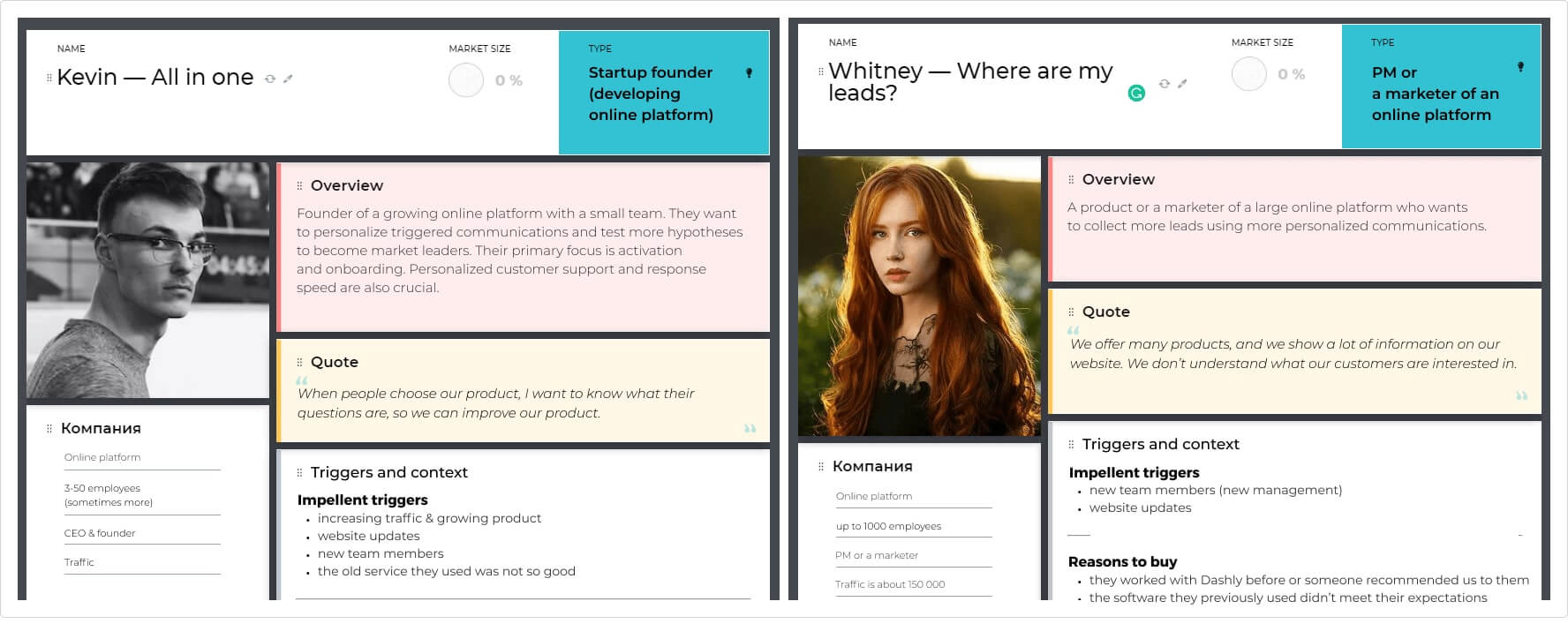
At any given time, a customer may have different contexts, triggers, challenges, “jobs,” and objectives. You need to know when the switch happens to guide them to another level of using your product.
We also profiled some buyer personas who can be our customers but don’t use our product now for some reason. When deciding on the future of our product, we also consider these profiles.
Learn how to convert your website visitors into qualified leads with this ultimate guide from Dashly experts
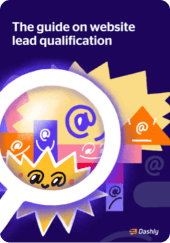
Thanks! the guide is already in your inbox
Keep exploring your customers
We carry out customer research and update our cards. After our mini-session, we did another quality research to validate our generated profiles and see how our customers can be distributed across segments.
We wanted to see which buyer persona prevails in Dashly to focus on the right audience. For that, we analyzed our existing customers and matched them to our profiles. The next stage is to develop the Value Proposition for each profile. That’s what we’re working on.
Further reading on user research:
- Guide to product research
- Jobs to be Done or everything you need to know about your users’ desires
- Jobs to be Done. How to implement the framework
- 3 Types of Customer Segmentation for Efficient User Communication
- Acquisition funnel marketing: Grow customer conversions at each step of user journey








